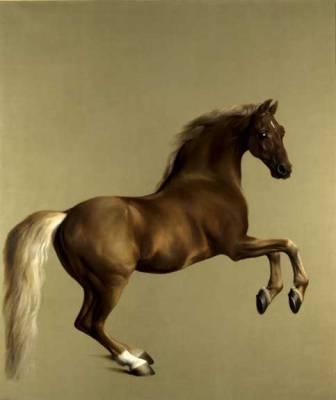There are those who misguidedly believe that they cannot possibly be interested in the work of
George Stubbs (1724-1806) was not only one of the greatest British painters to have lived, but the equal of any of his European contemporaries. A brilliant draughtsman, he was gifted with a control of line not seen in England since the time of Holbein. Technical excellence aside, he was a painter-philosopher and a student of science – a true man of the Enlightenment, whose work gave expression to numerous shifts, both great and subtle, in the very texture of European thought. Small wonder, then, that the versifier Peter Pindar should have written “’Tis said that nought so much the temper rubs / Of that ingenious artist, Mister Stubbs, / As calling him a horse painter …”
Because Stubbs wrote little during the course of his long life, his character and temperament remain something of a mystery. What can be said about him with certainty is that he was a slow developer and a largely self-taught man. Until he...


